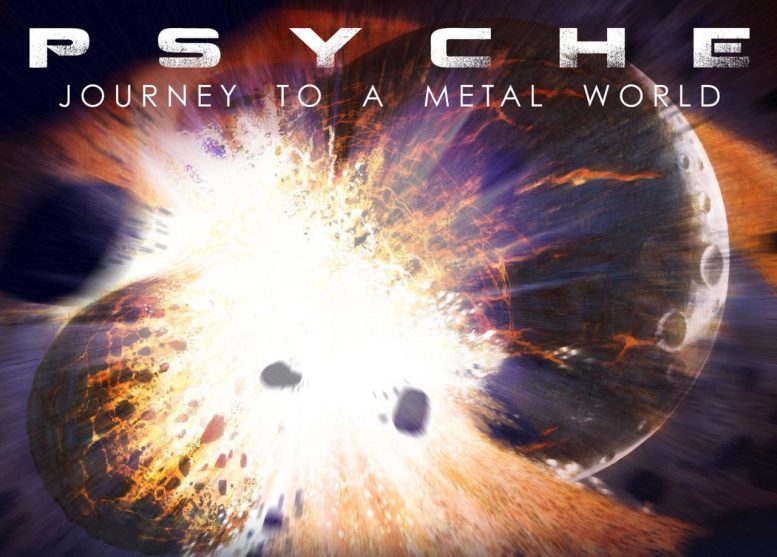
This artist’s illustration imagines a violent collision early in Psyche’s history. Credit: ASU/Peter Rubin
Join the journey as NASA’s Psyche mission team launches in 2022 to explore a unique metallic asteroid orbiting the sun between Mars and Jupiter. The asteroid, likely made largely of nickel-iron metal mixed with rock, could contain metal from the core of a planetesimal (the building block of an early rocky planet) and may offer a unique window into the violent history of collisions and accretion that created the terrestrial planets like Earth.
Arizona State University leads the Psyche mission. JPL, which is managed by Caltech for NASA, is responsible for the mission’s overall management, system engineering, integration and test, and mission operations. Maxar Technologies in Palo Alto, California, provided the high-power solar electric propulsion spacecraft chassis.
Video transcript:
There aren’t many classes of objects left in our solar system that we haven’t looked at up close with a spacecraft.
And one of them that’s left is the metal asteroids.
16 Psyche is an asteroid that orbits the sun out between Mars and Jupiter.
The reason that Psyche is unique is that it is metal rich.
It’s believed that it may be a remnant core of an early planetesimal that was formed in the very, very earliest parts of the formation of the solar system.
And after this planet started forming and this metal core formed inside of that, it collided with other bodies that then stripped off the rocky mantle, leaving this core in place.
This is the part of planets that we can’t sample directly today.
It’s too hot. The pressures are too high; our instruments would melt. Can’t drill a hole that deep in the Earth or other planets.
So how do we study the core of our planet?
Psyche gives us the opportunity to visit a core, the only way that humankind can ever do. And it would be the first metal object that humankind has ever visited.
And we’ve been approved to go in August of 2022. It’ll take a number of years to get there.
Flies past Mars gives us a gravity assist, uses that propulsion system to then slowly creep up. Towards the end of 2025. Getting there in early 2026.
We’ll go into four concentrically smaller orbits to collect the necessary measurements that we need from our three primary instruments.
So our payload consists of a couple of imagers, which are cameras that take pictures of Psyche.
Also a gamma ray neutron spectrometer which allows us to measure the elemental composition of the surface of Psyche.
And then a magnetometer which will allow us to detect any magnetic field that’s left at Psyche.
If Psyche still has some sort of remnant magnetic field that probably tells us it really was a core. It’s a strong indicator.
We also use the radio on the spacecraft as an instrument, so we can map out the gravity and map out the interior structure that way.
We’re using a particular thruster technology Halifax thruster technology. They operate five times more efficiently than normal rockets, so they use a lot less fuel and it’s what allows us to get into orbit around this asteroid.
Solar electric propulsion has been around for quite a while and it has flown before, but we’re continuing to push the boundaries.
We’re going to have a big five-panel fold-out solar panels that will provide the electricity for the thrusters, which use as propellant the Noble Gas Xenon.
This will be the first time that Halifax thrusters have flown in deep space.
Studying the evolution of a planetary body is a detective story.
There’s a magic to when you actually are on the launch pad and you say, “We’re go for launch,”
And you feel like singing and dancing and you feel like throwing up at the same time.
Let’s go discover things about our solar system that we have no other way to do.
I think that it’s fundamental to who we are and also who we should be.
It’s an incredible opportunity to be a part of the team making that happen.

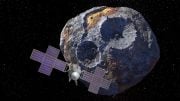
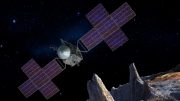
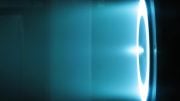
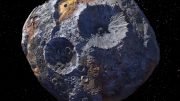
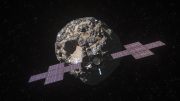
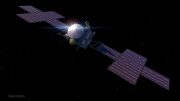

Be the first to comment on "Watch the Official Trailer: NASA’s Psyche Mission to a Metal World"